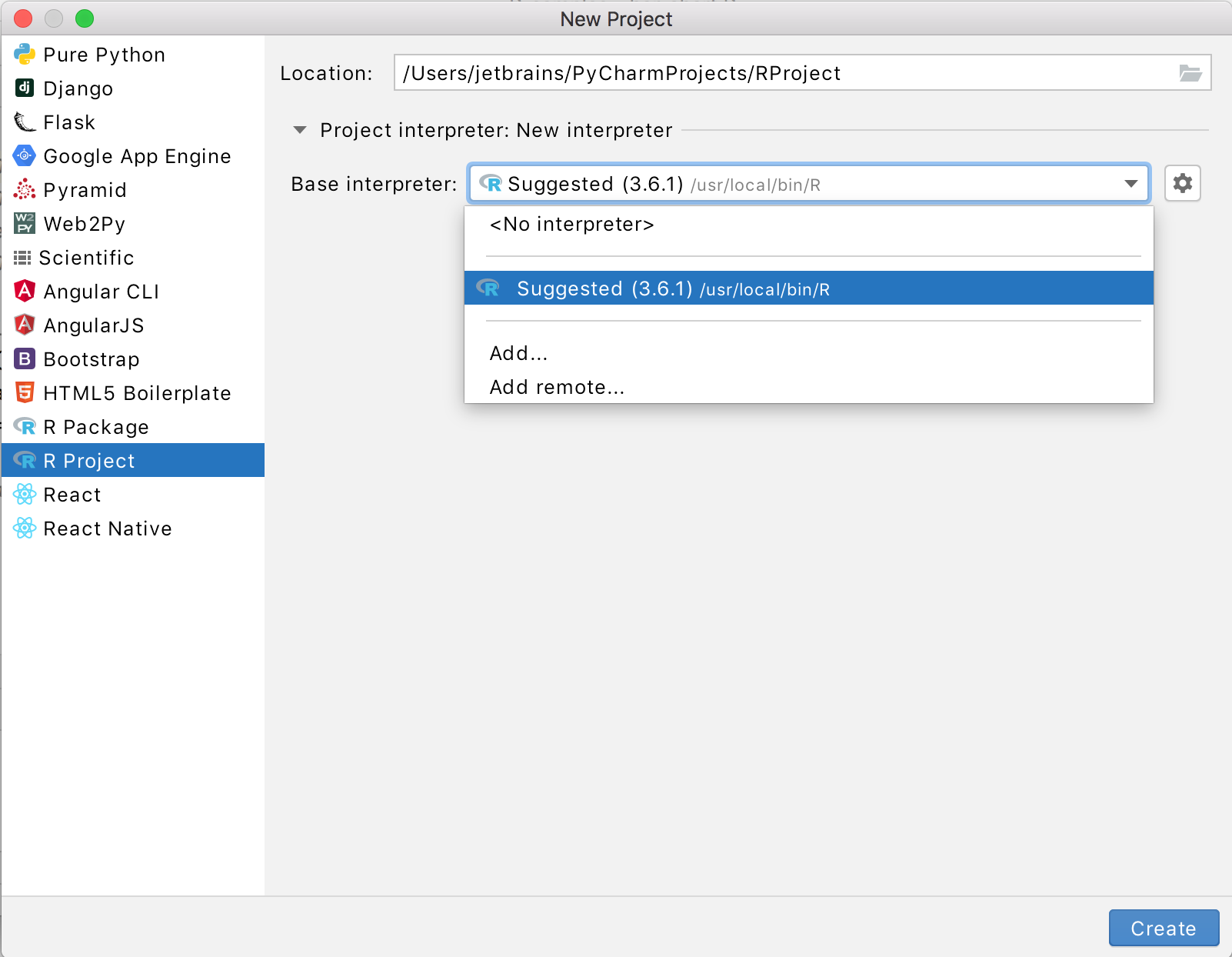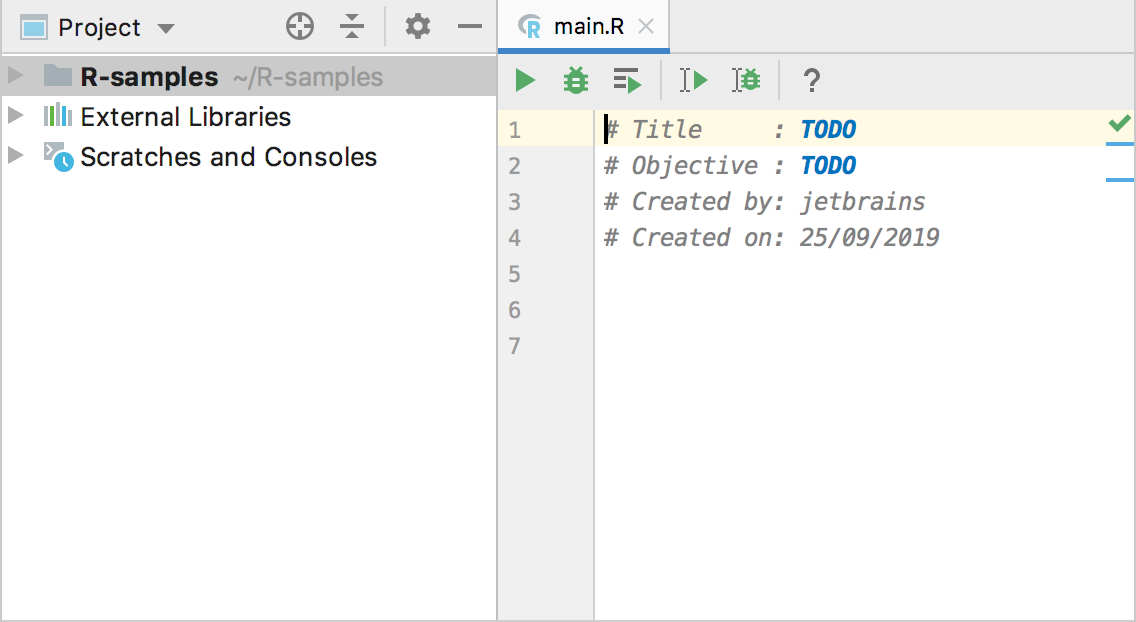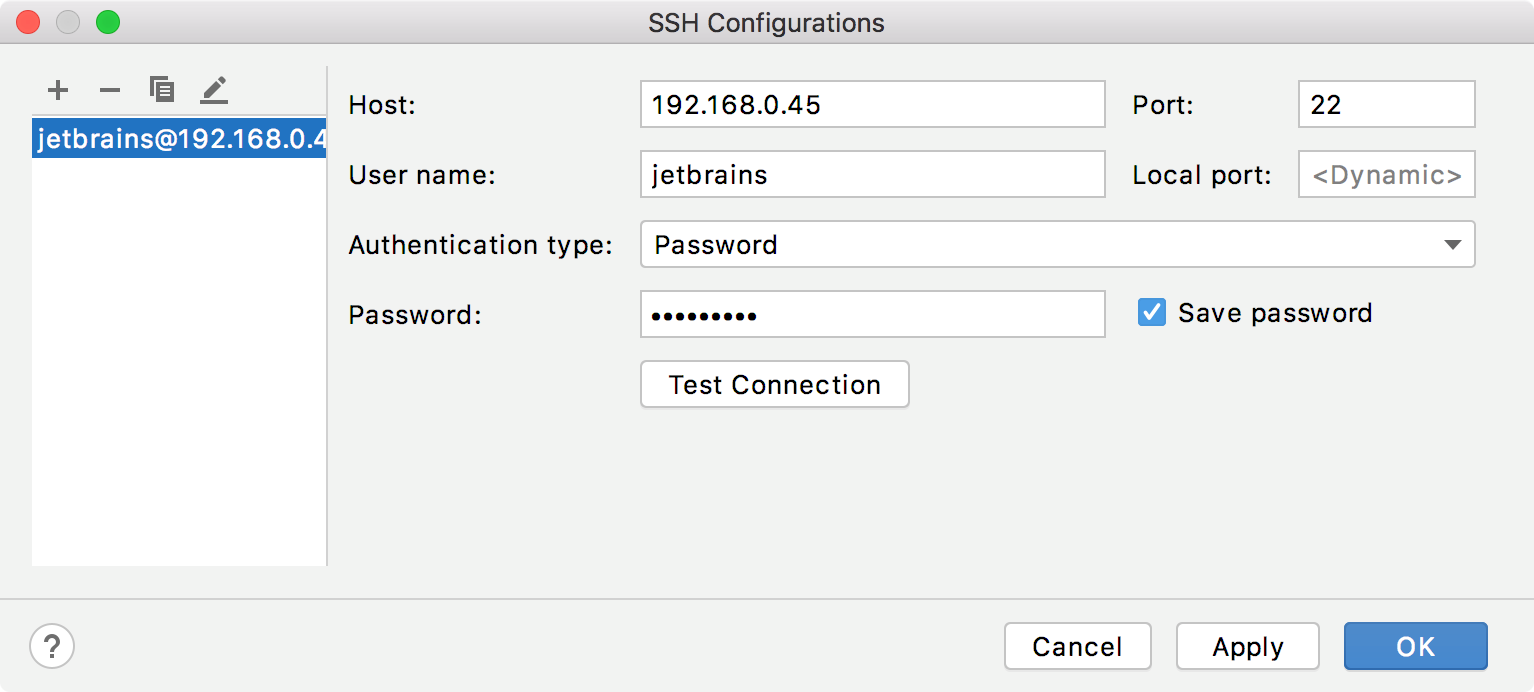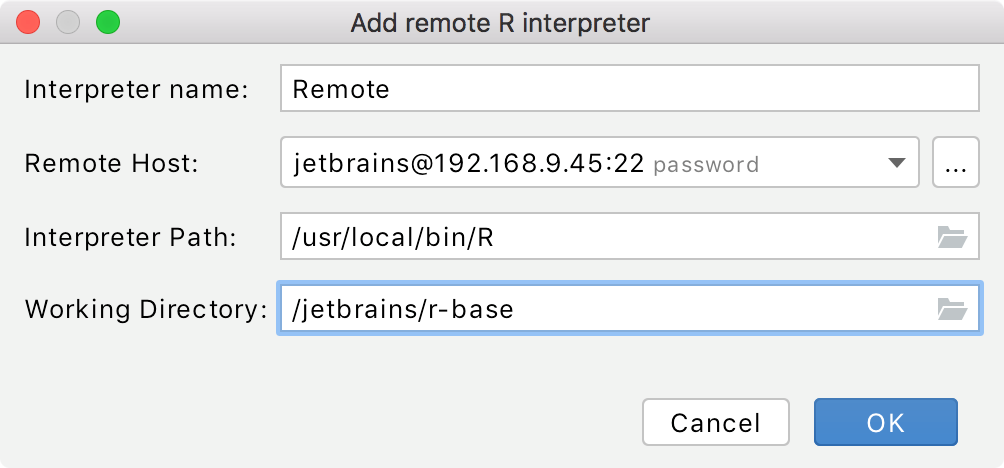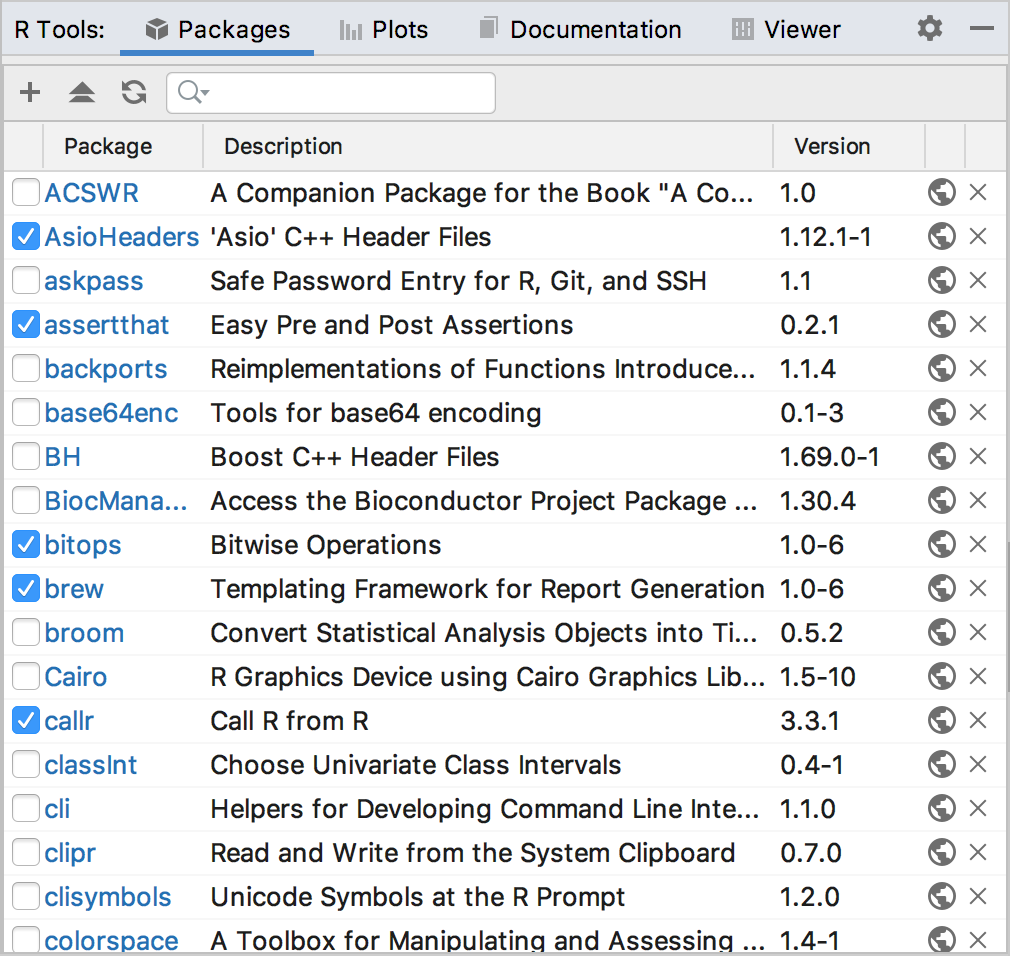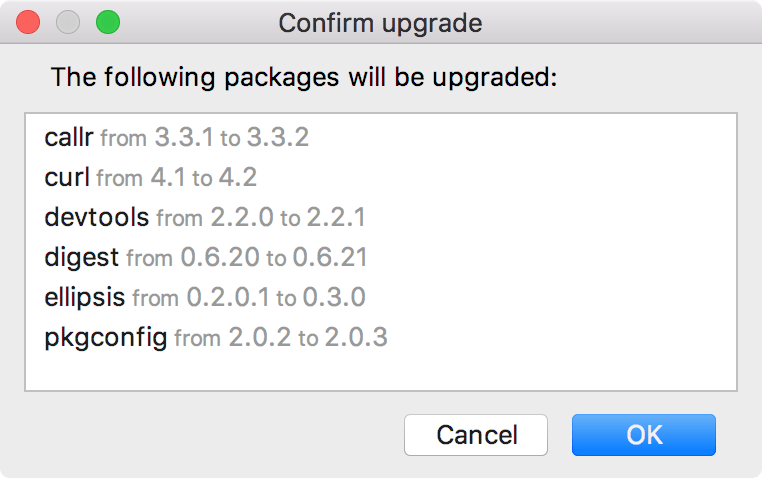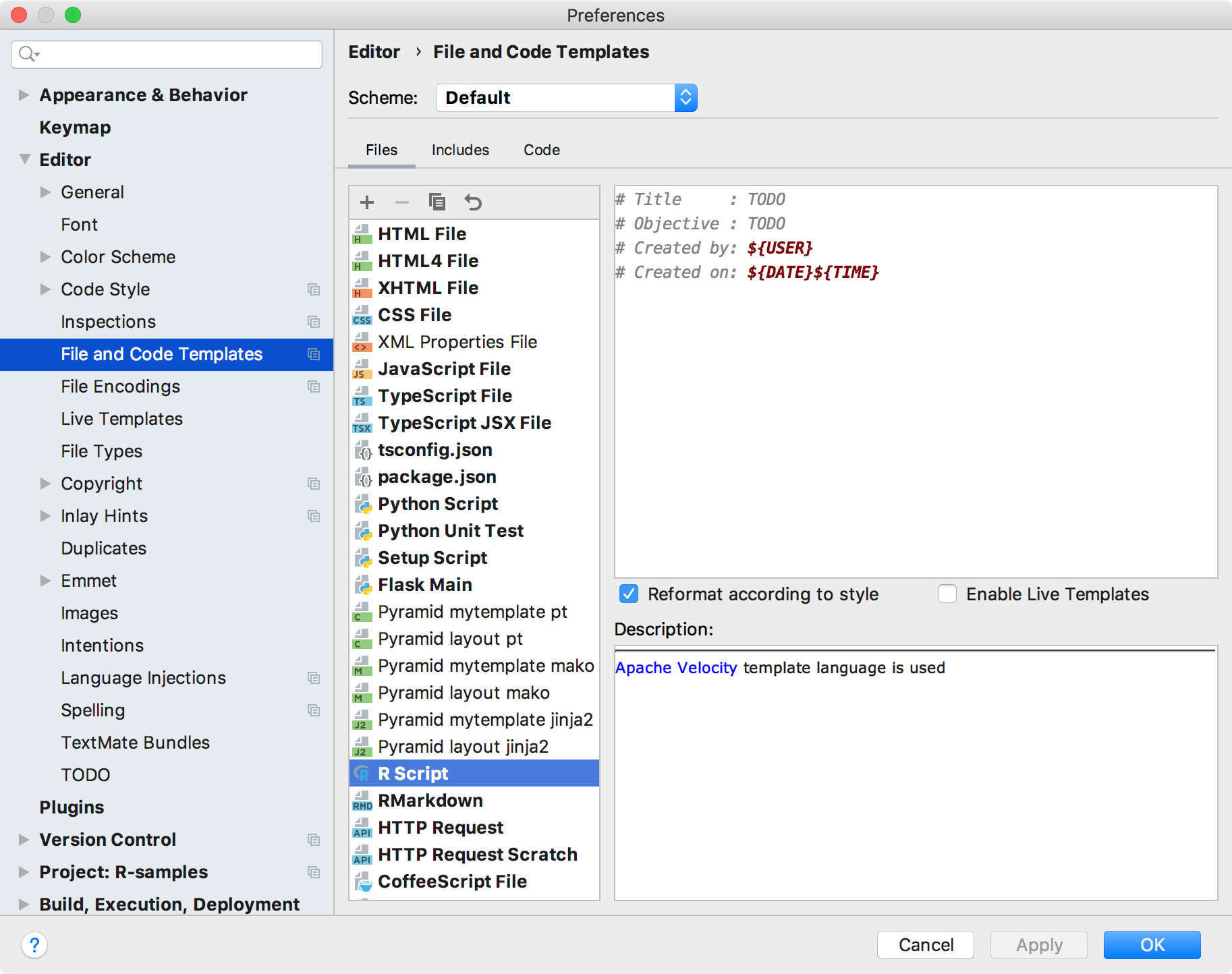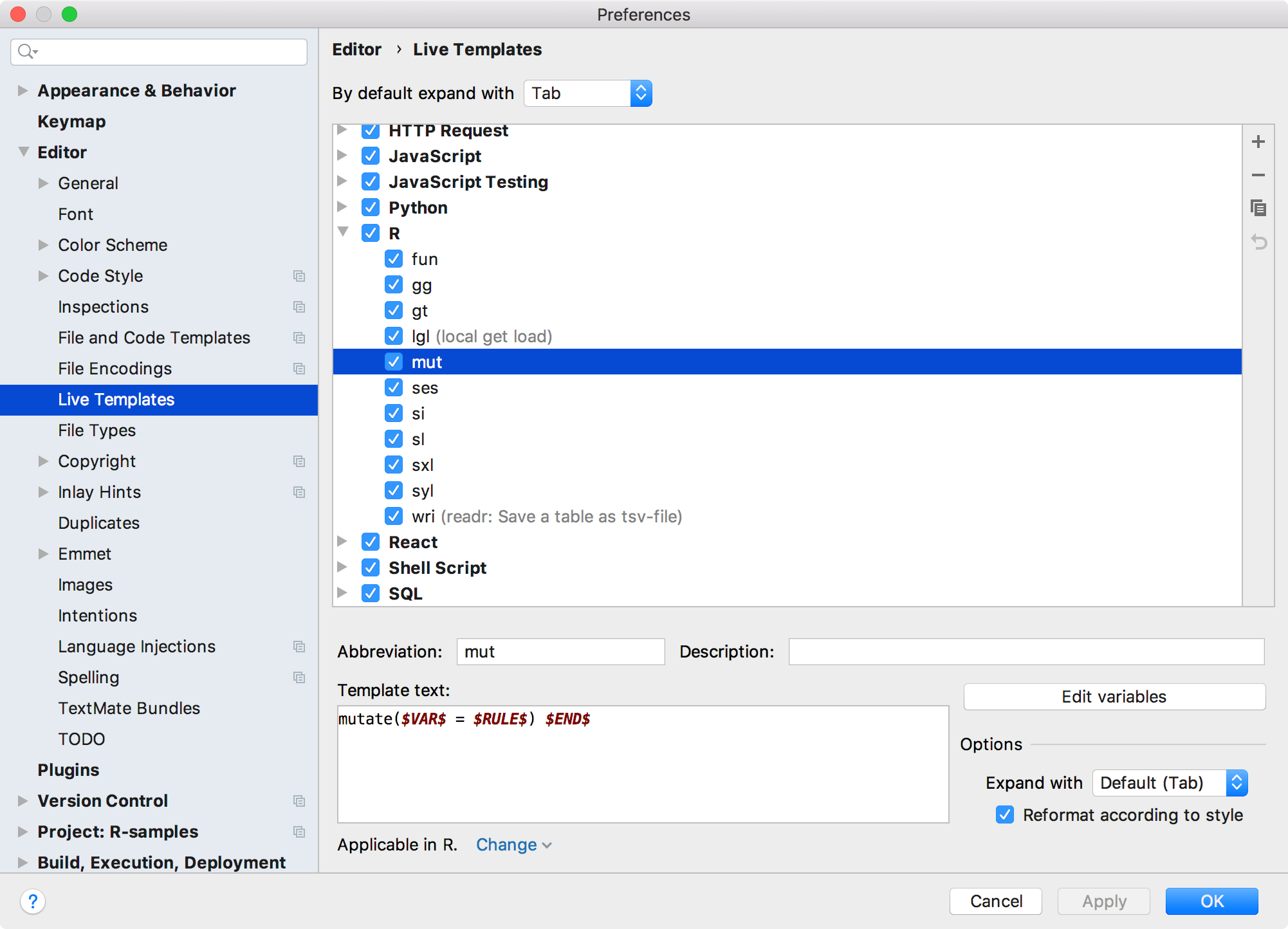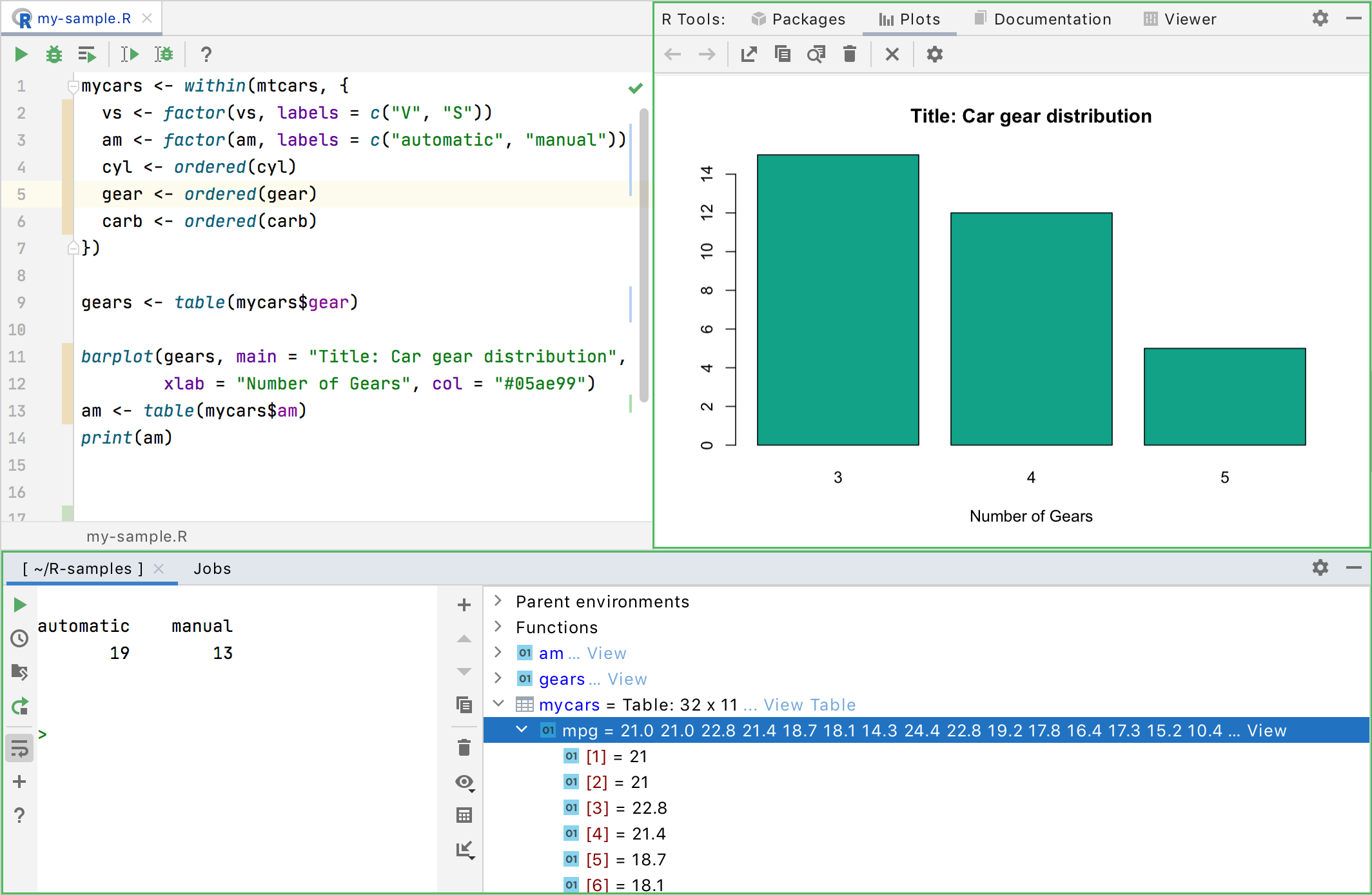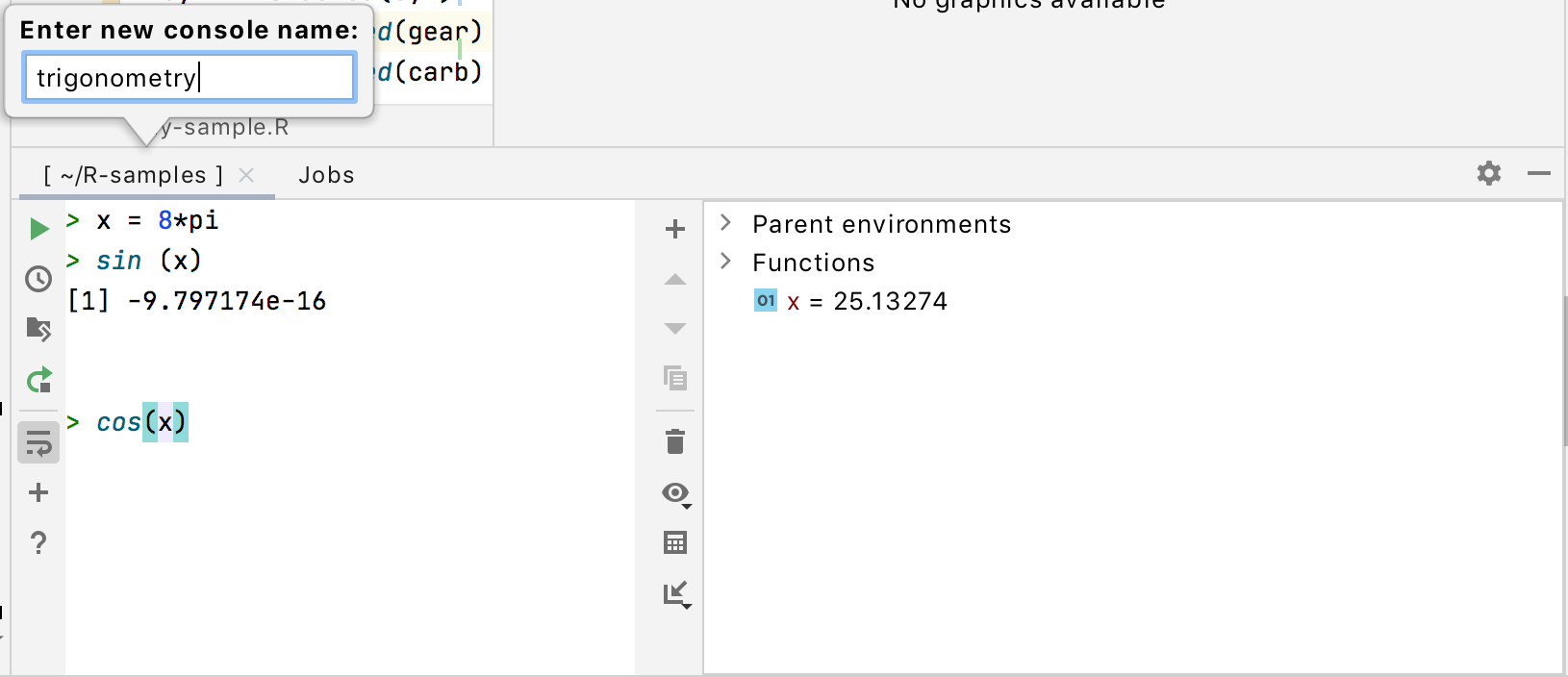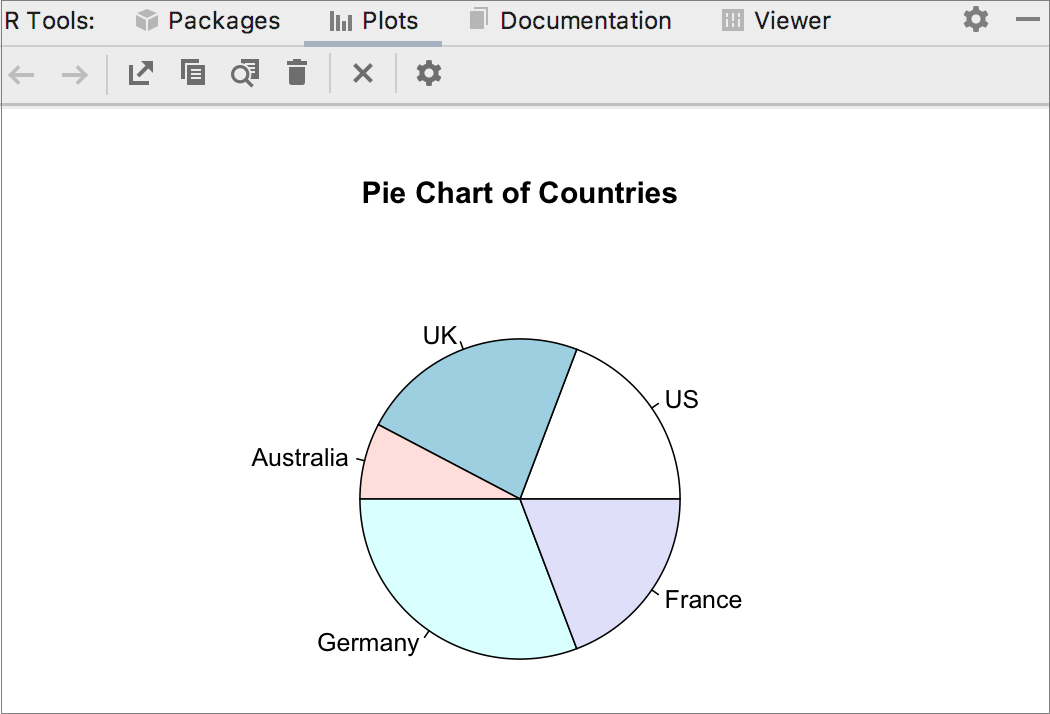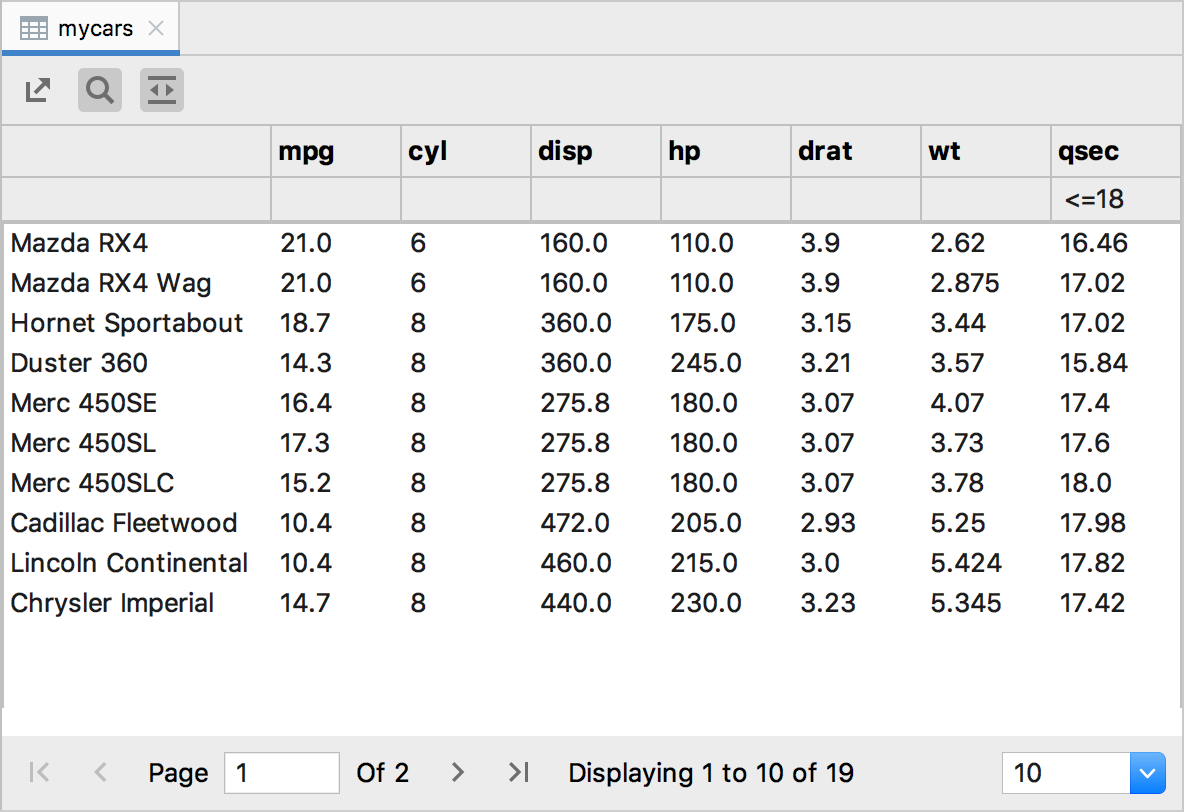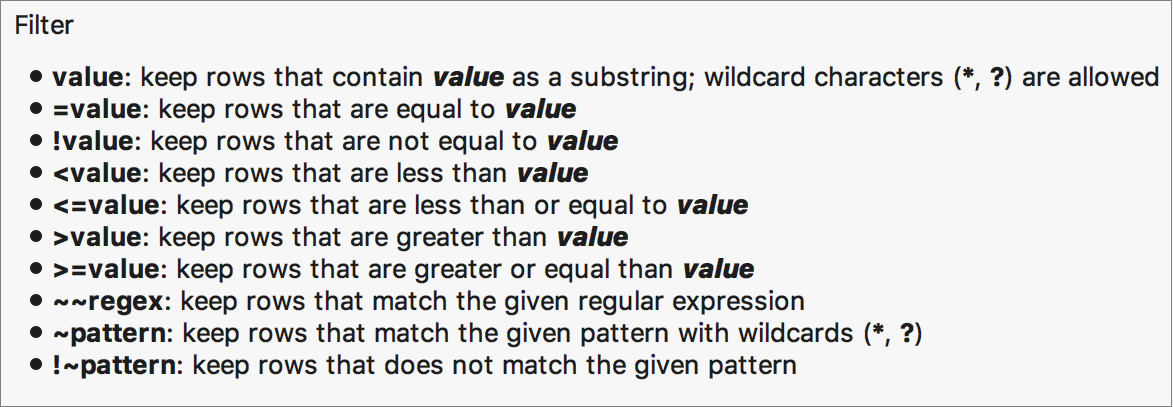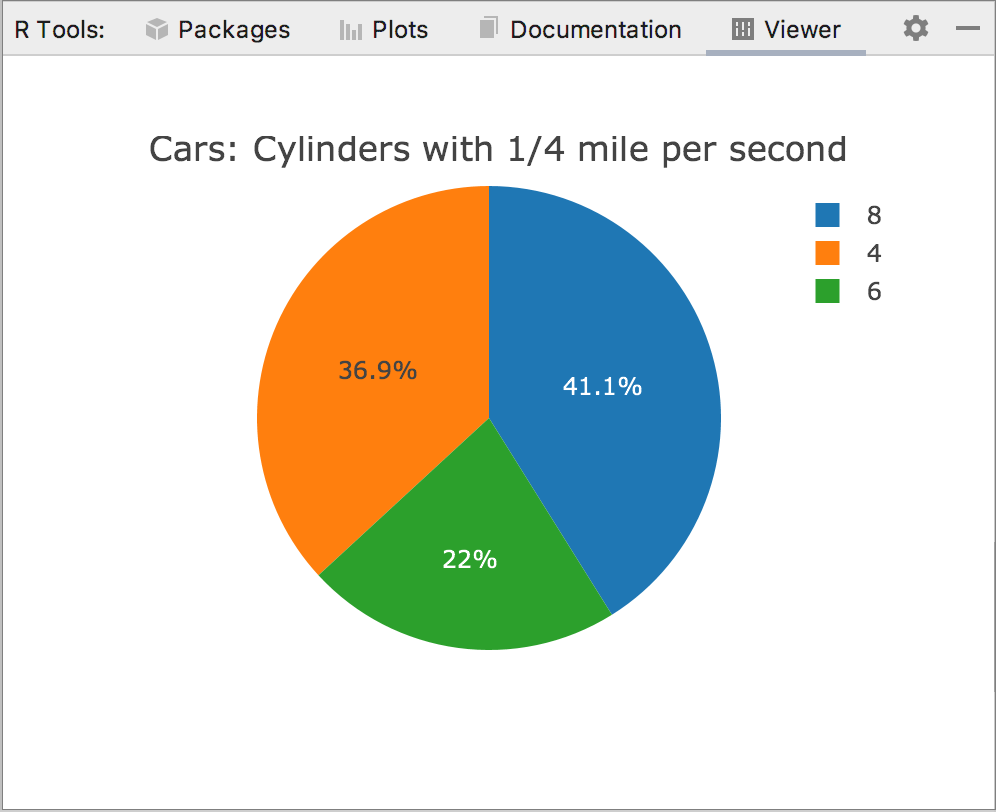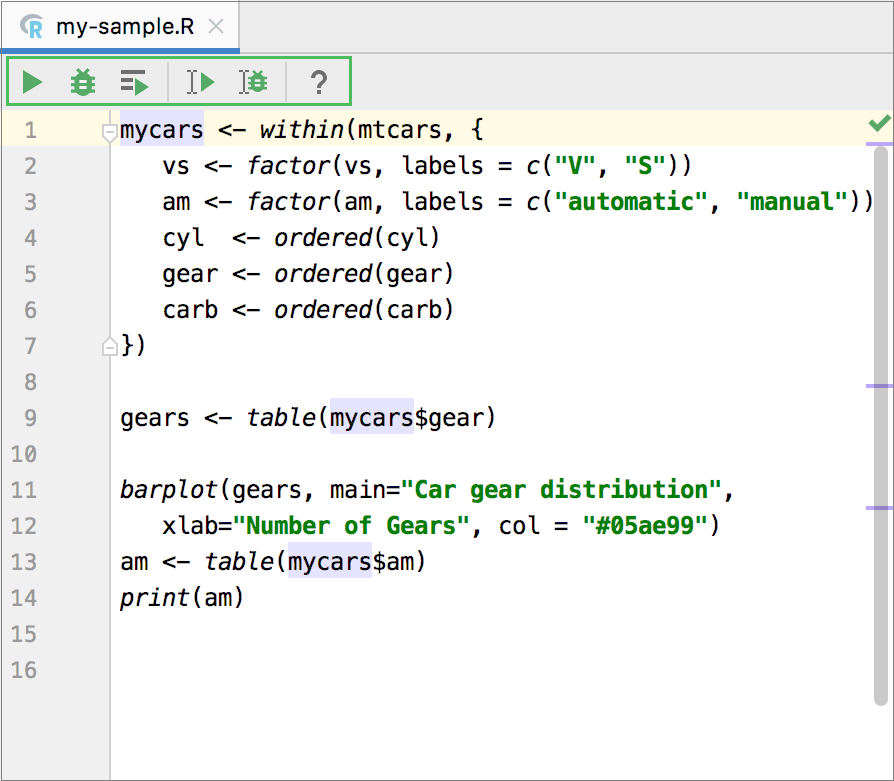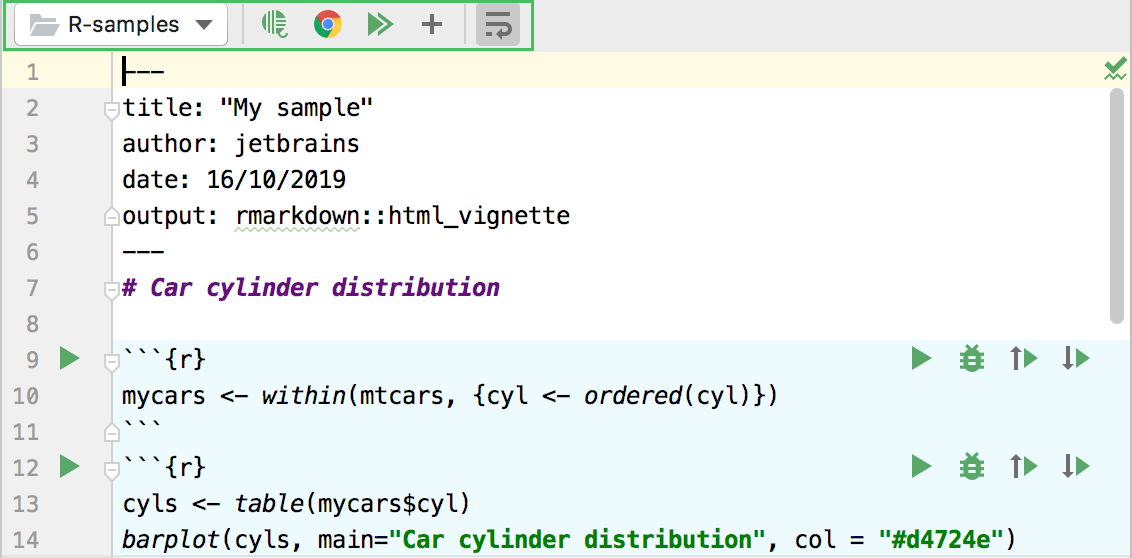R language support pycharm что это
Setup an R project
Before you start
Ensure that you have downloaded and installed R.
Install the R plugin as described in Manage plugins.
Create an R project
Do one of the following:
From the main menu, choose File | New Project
On the Welcome screen, click Create New Project
The New Project dialog opens.
In the New Project window, select the R Project type from the list of the available project types. Then specify the project name and its location.
Click Create to complete the task.
If PyCharm displays a popup prompting to install a required package, click the Install link to confirm the action.
Once you’ve created a new R project, PyCharm generates the main.R file with some project-related information based on the R file template.
At this point, you are all set to start coding in R, still you might want to modify some project settings to tailor them for your needs.
Change an R interpreter
Create a remote R interpreter
To create a remote interpreter, do one of the following:
Click the R interpreter selector in the Status bar and choose On SSH from the menu.
Fill in the parameters and click Test connection to verify them. Click OK to proceed.
Specify the path to the R executable on the remote host and the working direcoty. Then, save the changes.
Once the remote interpreter is set, its remote status will be shown in the interpreter’s name in list of the available R interpreters, and in the title of the R console.
Manage R packages
To configure R packages for the project, select the R Packages tab in the R Tools window.
When upgrading all packages to the available latest versions, PyCharm shows you the list of the packages to upgrade and asks to confirm the action. Click OK to proceed with the update.
To preview documentation for a particular package, click its name in the Package column. The package reference will be shown in the Documentation tab.
Configure R templates
Similarly, setup a file template for R Markdown files. Refer to File templates for more details.
Manage your R workspace
To tune the way you want to operate with R data, press Ctrl+Alt+S and go to the Settings/Preferences | Project | R Settings dialog.
Select Load workspace on R startup to ensure all your R content becomes available when you start PyCharm with the R plugin.
Select Save R workspace on exit if you want to save all R data generated during the current session in your workspace.
To execute your R scripts on the remote environment, create a remote configuration and set is as an R interpreter.
R plugin support
With the R plugin installed in PyCharm, you can perform various statistical computing using R language and use coding assistance, visual debugging, smart running and preview tools, and other popular IDE features. PyCharm supports R 3.4 and later.
R plugin support in PyCharm includes:
Intention actions and quick fixes, including quick fixes for the missing import statements.
Auto-saving changes that you make in your files. Saving is triggered by various events, for example, closing a file or a project, or quitting the IDE.
Ability to preview data in the graphic and tabular forms.
Ability to run and debug R scripts with live variables view.
Quick start with the R plugin in PyCharm
To start working the R files in PyCharm:
Download and install the R language.
Install the R Language for IntelliJ plugin.
Inspect the set of the installed R packages and install additional packages required for your project.
Analyze, export, and save the results.
Get familiar with the user interface
When you edit and execute R files with the R plugin in PyCharm, you should notice the following changes in PyCharm user interface:
At any time you can open R Tools and R Console windows by selecting the corresponding option in the View | Tool Windows menu.
R Console
The R Console tab appears in the group of the PyCharm tool windows. It enables executing R commands line by line similar to the console provided with the R installation.
Execute the current statement in the one-line console ( Enter ).
Open the R Console History to preview the list of the executed commands.
Open any file in the editor, then click this button. The location of the opened file will be set as the current directory for the current console tab.
Restart the console session.
Open a new R Console tab.
Help on executing R scripts.
You can open several tabs in the R console for different tasks. To distinguish between the opened consoles, right-click any tab and enter a specific name.
The Jobs tab shows the execution of the jobs initiated for R files. You can preview the job status (succeeded or failed), duration of the execution, and the time you launched the job.
Use the following icons of the Jobs toolbar:
Clear the list of jobs.
Plots
In the Plots tab of the R Tools window, you can preview various graphs built with the R-specific data plotting libraries. The window displays all the graphs built within a single execution session that lasts until you close the R Console or explicitly terminate the process. The graphs are arranged one on a page.
Go to the previous or next graphics page.
Copy the graphics in the clipboard.
Zoom in the graphics.
Close the currently selected page.
Close all graphics pages.
Open the Graphics device settings dialog to set up the size of the image and its resolution.
Tables
When you analyze tabular data in the Variables view, you can click the View Table link and preview the table in a separate tab the editor. To order values in a particular column, click its header.
Filter data in the table columns. Hover over the button to preview the available filters and type the filter criteria under the column header.
Organize table in pages. Toggle this button and specify the number of table rows to display on a page: 10, 15, 30, or 100.
Viewer
With the Viewer tab of the R Tools window you can preview R graphics built with the JavaScript visualization libraries.
R packages
Install, uninstall, and update R packages in the Packages tab of the R Tools window. It lists all the installed R packages.
Install an R package from the list of the available packages.
Upgrade all packages to the latest available versions. This button is enabled if at least for one of the installed packages there is a newer version.
Update the Latest version column by fetching the latest available versions for the installed packages.
R files toolbar
When you open an R file in the editor, the following toolbar appears. Use it to run and debug R code.
Execute the R file.
Run a job for an R file
Execute the selected code fragment
Debug the selected code fragment
Open the Documentation tab.
Markdown toolbar
Select the directory for the generated HTML output. By default, the project directory is selected. To alter the location, select Custom from the list and specify any directory in your file system.
Renders the document in the HTML format. The filename corresponds to name of the R Markdown file. The location of the generated file is defined by the option selection in the Output Directory list.
Opens the generated HTML document. Note that you should build the output first ( ).
Inserts a new chunk for R code below the current chunk.
Softly wraps lines in the editor.
Refer to the following topics for more information about R plugin support in PyCharm:
Русские Блоги
Решение ошибки Pycharm: не определен интерпретатор R
После установки pycharm при открытии интерфейса в правом нижнем углу часто появляется красное предупреждение:
No R interpreter defined: Many R related features like completion, code checking and help won’t be available. You can set an interpreter under Preferences->Languages->R
Нажмите на красное предупреждение, чтобы просмотреть подробности.
Два метода лечения заключаются в следующем:
Метод 1. Выберите установку R, а затем добавьте путь R к Pycharm:
②Скачать по соответствующей системе
③После завершения загрузки продолжите установку, в основном нажмите «Далее» до конца, чтобы завершить установку.
④ Добавьте путь установки R в pycharm
Files->Settings->Plugins->Languages & Frameworks->R Language
⑤Нажмите «ОК», чтобы завершить настройку пути к языку R.
⑥ Перезапустите pycharm, красное предупреждение больше не отображается при открытии интерфейса, пока проблема решена
Метод 2. Если R не требуется в процессе разработки, удалите языковой плагин R напрямую.
Files->Settings->Plugins->R Language Support->Uninstall
Pycharm
Инструкция по началу работы
Это краткое руководство предназначено для ознакомления с ключевыми понятиями и поможет быстро начать работу с IDE.
Шаг 0. Прежде чем вы начнете
На каких языках поддерживается PyCharm?
С PyCharm вы можете разрабатывать приложения на Python. Кроме того, в Professional Edition можно разрабатывать приложения Django, Flask и Pyramid. Кроме того, он полностью поддерживает HTML (включая HTML5), CSS, JavaScript и XML: эти языки включены в IDE через плагины и включены для вас по умолчанию. Поддержка других языков и фреймворков также может быть добавлена через плагины (перейдите к Settings | Plugins или PyCharm | Preferences | Plugins для пользователей MacOS, чтобы узнать больше или установить их во время первого запуска IDE).
 |
| File / Settings / Plugins |
На каких платформах я могу запустить PyCharm?
Шаг 1. Откройте / создайте проект в PyCharm
Зачем мне нужен проект?
Все, что вы делаете в PyCharm, выполняется в контексте проекта. Он служит основой для поддержки кодирования, рефакторинга, согласованности стиля кодирования и т.д.
У вас есть три варианта начать работу над проектом внутри среды IDE:
1. Открыть существующий проект
Начните с открыв один из ваших существующих проектов, хранящихся на вашем компьютере. Вы можете сделать, нажав Открыть проект (Open )на экране приветствия (или File | Open):
Или выберите Open в меню File и укажите каталог, в котором находятся ваши источники:
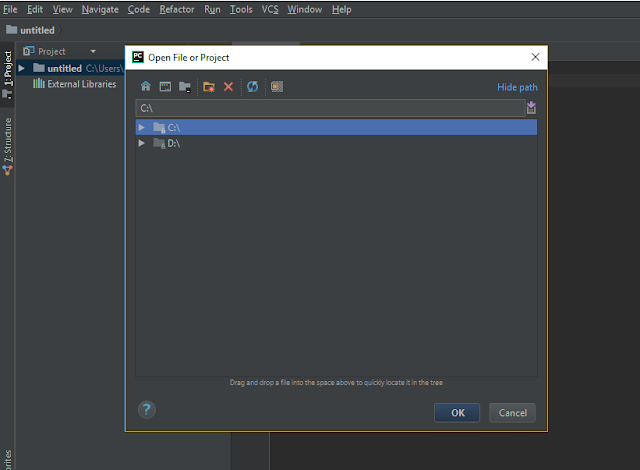 |
| PyCharm File/Open |
Затем PyCharm создаст для вас проект из ваших источников.
Смотрите также. Раздел Импорт проекта из существующего исходного кода.
2. Создать проект с нуля
Если вы предпочитаете начинать с нуля, нажмите New Project и на открывшемся экране введите имя проекта в диалоговом окне и будет создан проект Python.
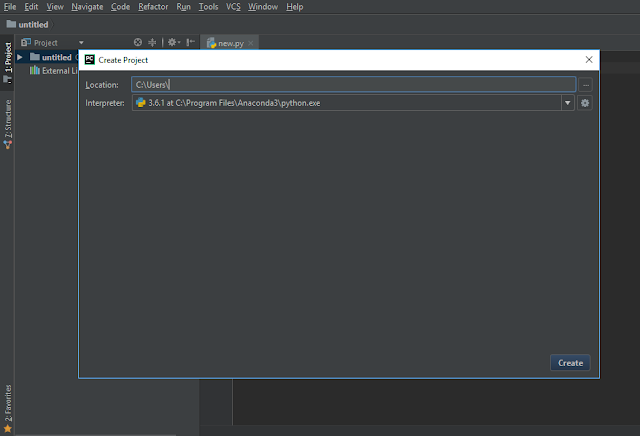 |
| File / New Project |
Смотрите также. Раздел Создание и управление проектами
Шаг 2. Ознакомьтесь с интерфейсом
Когда проект открывается, вы видите главное окно, разделенное на несколько логических областей. Давайте рассмотрим ключевые элементы пользовательского интерфейса здесь:
 |
| Интерфейс PyCharm (тёмный) |
 |
| Интерфейс PyCharm (светлый) |
Кроме того, в нижнем левом углу окна PyCharm в строке состояния вы увидите кнопку. Эта кнопка переключает показ панелей инструментов. Если вы наведите указатель мыши на эту кнопку, появится список доступных в данный момент панелей:
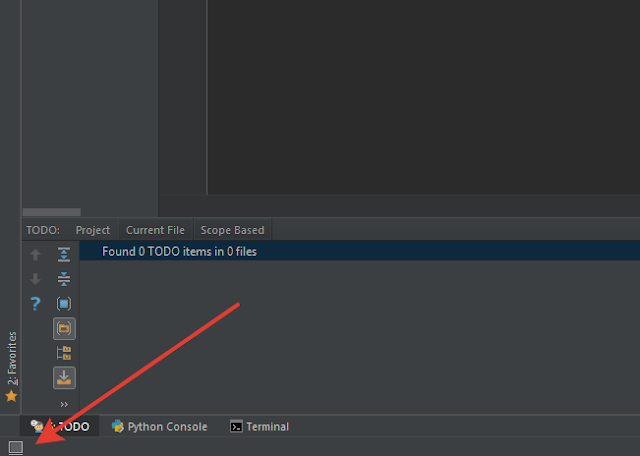 |
| Эта кнопка переключает показ панелей инструментов |
 |
| Переключение между панелями |
Шаг 3. Настройте свою среду
Вы можете настроить среду IDE, чтобы она идеально соответствовала вашим потребностям и была удобна для Вас. Зайдите в меню File / Settings, чтобы просмотреть список доступных параметров настройки.
 |
| File / Settings PyCharm |
Внешний вид IDE
 |
| File / Settings / Appearance and Behavior /Appearance |
Редактор
Множество вкладок, доступных в меню File / Settings / Editor помогут вам настроить каждый аспект поведения редактора. Здесь доступно множество опций, начиная с общих настроек (например, с помощью функции Drag’n’Drop, конфигурации прокрутки и т.д.). Для настройки цвета для каждого доступного языка и варианта использования, для вкладок и настроек свертки кода, для поведения завершения кода и.т.д.
 |
| File / Settings / Editor |
Стиль кода
Стиль кода может быть определен для каждого языка File / Settings / Editor / Code Style. Вы также можете создать и сохранить свой собственный стиль кода.
 |
| File / Settings / Editor / Code Style |
Раскладка
PyCharm использует подход, ориентированный на клавиатуру, что означает, что почти все действия, доступные в среде IDE, сопоставляются с комбинациями клавиш.
PyCharm предоставляет вам стандартную раскладку (выберите Help / Keymap Reference в главном меню), делая ваше кодирование действительно продуктивным и удобным. Однако вы всегда можете её изменить File / Settings / Keymap
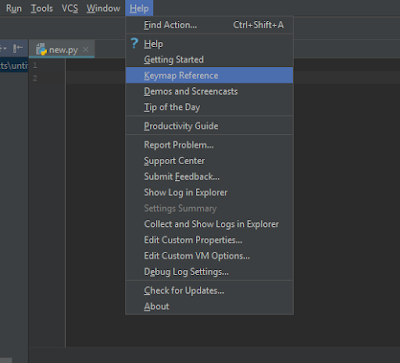 |
| Help / Keymap Reference |
 |
| PyCharm Default keymap |
 |
| File / Settings / Keymap |
Также есть некоторые предварительно определенные раскладки клавиатуры (такие как Emacs, Visual Studio, Eclipse, NetBeans и т.д.), И вы также можете создать свою собственную раскладку на основе существующей.
 |
| Некоторые предварительно определенные раскладки клавиатуры |
Завершение кода
Интеллектуальный ввод анализирует контекст, в котором вы сейчас работаете, и предлагает более точные предложения, основанные на этом анализе.
 |
| Auto-Completing Code PyCharm |
Intention Actions
PyCharm следит за тем, что вы сейчас делаете, и делает умные предложения, называемые Intention Actions. При указании с лампочкой Intention Actions позволяют применять автоматические изменения к коду.
 |
| Intention Actions |
Полный список доступных Intention Actions можно найти в File / Settings / Editor / Intentions
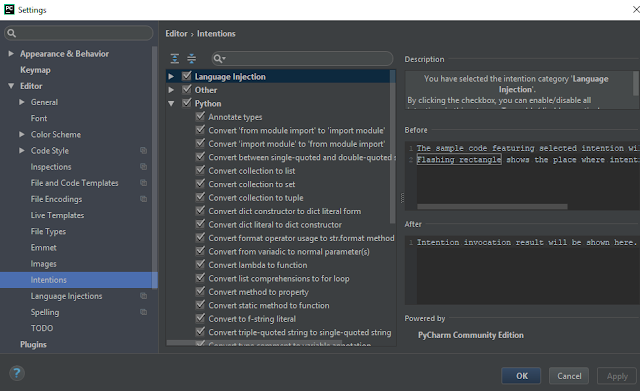 |
| File / Settings / Editor / Intentions |
Шаг 5. Сделайте свой код аккуратным
PyCharm контролирует ваш код и пытается сохранить его точным и чистым. Он обнаруживает потенциальные ошибки и проблемы и предлагает быстрые исправления (quick-fixes) для них.
Полный список доступных проверок можно найти в разделе меню File / Settings / Editor / Inspections. Отключите некоторые из них или включите другие, а также настройте степень серьезности каждой проверки. Вы решаете, следует ли считать это ошибкой или просто предупреждением.
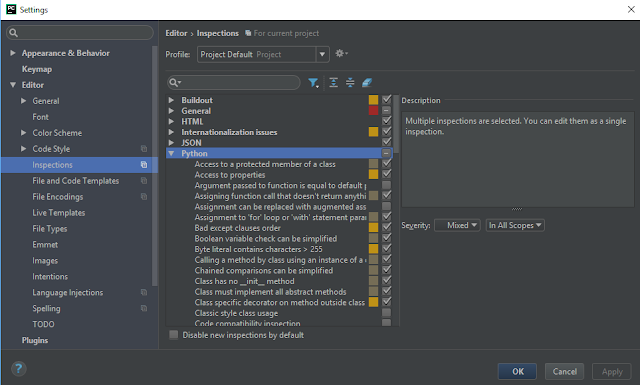 |
| File / Settings / Editor / Inspections |
Шаг 6. Создание кода
Написание кода может быть намного проще и быстрее, если вы используете варианты генерации кода, доступные в PyCharm. The Code / Generate ( Alt+Insert) поможет вам создать символы, а также предложит переопределить / реализовать некоторые функции:
